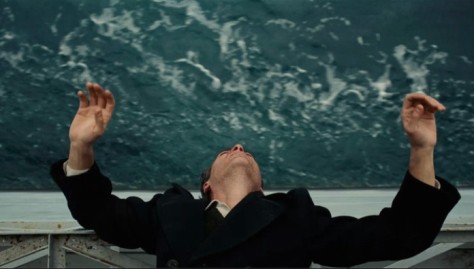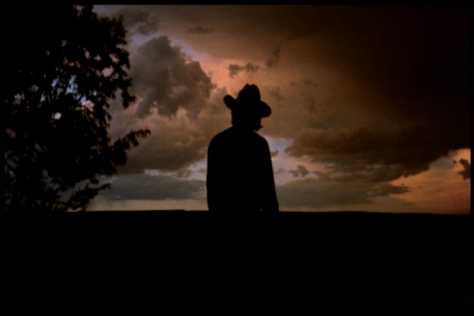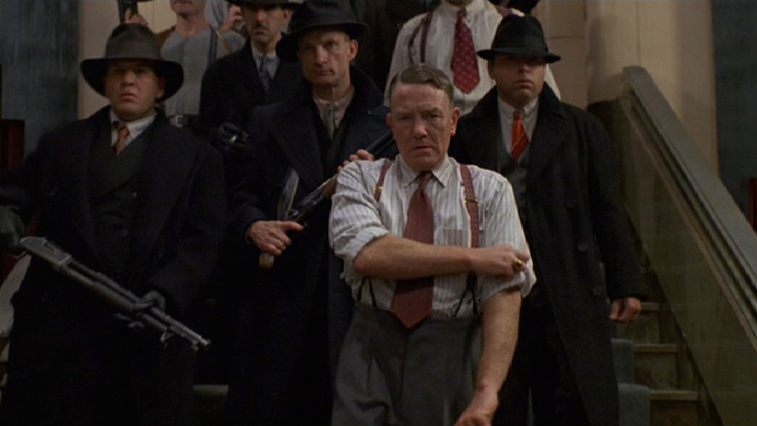By Dennis Hartley
(Originally posted on Digby’s Hullabaloo on January 25, 2020)

Really? Another decade slipped by again when I wasn’t looking? This seems as good a time as any to reflect back on the 400+ first-run films I reviewed between 2010 and 2019 and share my picks for the top 10 of the past 10 years. Happy viewing! Alphabetically…

Black KkKlansman –So what do you get if you cross Cyrano de Bergerac with Blazing Saddles? You might get Spike Lee’s Black KkKlansman. That is not to say that Lee’s film is a knee-slapping comedy; far from it. Lee takes the true story of Ron Stallworth (John David Washington), an African-American undercover cop who managed to infiltrate the KKK in Colorado in the early 70s and runs with it, in his inimitable fashion.
I think this is Lee’s most affecting and hard-hitting film since Do the Right Thing (1989). The screenplay (adapted by Charlie Wachtel, David Rabinowitz, Kevin Willmott and Lee from Stallworth’s eponymous memoir) is equal parts biopic, docudrama, police procedural and social commentary, finding a nice balance of drama, humor and suspense.

Blade Runner: 2049 – So many films passing themselves off as “sci-fi” these days are needlessly loud and jarringly flash-cut. Not this one. Which is to say that Blade Runner 2049 is leisurely paced. The story is not as deep or complex as the film makers want you to think. The narrative is essentially a 90-minute script (by original Blade Runner co-screenwriter Hampton Fancher and Michael Green), stretched to a 164-minute run time.
So why is it on my top 10 list? Well, for one thing, the “language” of film being two-fold (aural and visual), the visual language of Blade Runner 2049 is mesmerizing and immersive. I imagine the most burning question you have about Denis Villeneuve’s film is: “Are the ‘big’ questions that were left dangling at the end of Ridley Scott’s 1982 original answered?” Don’t ask me. I just do eyes. You may not find the answers you seek, but you may find yourself still thinking about this film long after the credit roll.

Certified Copy – Just when you’re being lulled into thinking this is going to be one of those brainy, talky, yet pleasantly diverting romantic romps where you and your date can amuse yourselves by placing bets on “will they or won’t they-that is, if they can both shut up long enough to get down to business before the credits roll” propositions, Iranian director Abbas Kiarostami throws you a curve-ball. Then again, maybe this film isn’t so much about “thinking”, as it is about “perceiving”. Because if it’s true that a “film” is merely (if I may quote Orson Welles) “a ribbon of dreams”-then Certified Copy, like any true work of art, is simply what you perceive it to be-nothing more, nothing less. Even if it leaves you scratching your head, you get to revel in the luminosity of Juliette Binoche’s amazing performance; there’s pure poetry in every glance, every gesture.

Computer Chess – The most original sci-fi film of 2013 proved you don’t need a $300 million budget and 3-D technology to blow people’s minds. For his retro 80s-style mockumentary, Andrew Bujalski finds verisimilitude via a vintage B&W video camera (which makes it seem as if you’re watching events unfold on a slightly fuzzy closed-circuit TV), and “documents” a tournament where nerdy computer chess programmers from all over North America assemble once a year to match algorithmic prowess. Not unlike a Christopher Guest satire, Bujalski throws idiosyncratic characters into a jar, and then steps back to watch. Just when you think you’ve got the film sussed as a gentle satirical jab at computer geek culture, things get weird…then weirder. Dig that final shot!

The Grand Budapest Hotel – In the interest of upholding my credo to be forthright with my readers (all three of you), I will confess that, with the exception of his engaging 1996 directing debut, Bottle Rocket, and the fitfully amusing Rushmore, I have been somewhat immune to the charms of writer-director Wes Anderson. To me, “a Wes Anderson film” is the cinematic equivalent to Wonder Bread…bland product, whimsically wrapped.
At the risk of making your head explode, I now have a second confession. I kind of enjoyed The Grand Budapest Hotel. I can’t adequately explain what happened. The film is not dissimilar to Anderson’s previous work; in that it is akin to a live action cartoon, drenched in whimsy, expressed in bold primary colors, populated by quirky characters (who would never exist outside of the strange Andersonian universe they live in) caught up in a quirky narrative with quirky twists and turns (I believe the operative word here, is “quirky”). So why did I like it? I cannot really say. My conundrum (if I may paraphrase one of my favorite lines from The Producers) would be this: “Where did he go so right?”

Love and Mercy – Paul Dano’s Oscar-worthy performance as the 1960s era Brian Wilson is a revelation, capturing the duality of a troubled genius/sweet man-child to a tee. If this were a conventional biopic, this would be “good enough” as is. But director Bill Pohlad (and screenwriters Oren Moverman and Michael A. Lerner) make this one go to “11”, by interpolating Brian’s peak period with his bleak period…the Dr. Eugene Landy years (early 80s through the early 90s). This “version” of Brian is played by John Cusack, who has rarely been better; this is a real comeback performance for him. There are no bad performances in this film, down to the smallest parts. I usually try to avoid hyperbole, but I’ll say it: This is one of the best rock’n’roll biopics I’ve seen in years.

The Master – As Inspector Clouseau once ruminated, “Well you know, there are leaders…and there are followers.” At its most rudimentary level, Paul Thomas Anderson’s film is a two-character study about a leader and a follower (and metaphorically, all leaders and followers). It’s also a story about a complex surrogate father-son relationship (a recurring theme in the director’s oeuvre). And yes, there are some who feel the film is a thinly disguised take-down of Church of Scientology founder L. Ron Hubbard. I found it to be a thought-provoking and startlingly original examination of why human beings in general are so prone to kowtow to a burning bush, or an emperor with no clothes; a film that begs repeated viewings. One thing’s for sure- the late Philip Seymour Hoffman and Joaquin Phoenix deliver a pair of knockout performances. Like all of Anderson’s films, it’s audacious, sometimes baffling, but never dull.

Once Upon a Time in Hollywood – “Surely (you’re thinking), a film involving the Manson Family and directed by Quentin Tarantino must feature a cathartic orgy of blood and viscera…amirite?” Sir or madam, all I can tell you is that I am unaware of any such activity or operation… nor would I be disposed to discuss such an operation if it did in fact exist, sir or madam. What I am prepared to share is this: Leonardo DiCaprio and Brad Pitt have rarely been better, Margot Robbie is radiant and angelic as Sharon Tate, and 9-year-old moppet Julia Butters nearly steals the film. Los Angeles gives a fabulous and convincing performance as 1969 Los Angeles. Oh, and Once Upon a Time in Hollywood is now my favorite “grown-up” Quentin Tarantino film (after Jackie Brown).

Samsara – Whether you see Ron Fricke’s film as a deep treatise on the cyclic nature of the Omniverse, or merely as an assemblage of pretty pictures, doesn’t amount to a hill of beans in this crazy world. The man who gave us the similar cinematic tone poems Chronos and Baraka drops a clue early on in his latest film, as we observe a group of Buddhist monks painstakingly creating a sand mandala (it must take days). At the very end of the film, we revisit the artists, who now sit in silent contemplation of their lovely creation. This (literal) Moment of Zen turns out to be the preface to the monks’ next project-the ritualistic de-construction of the painting (which I assume must take an equal amount of time). Yes, it is a very simple metaphor for the transitory nature of beauty, life, the universe and everything. But, as they say, there’s beauty in simplicity.

Your Name – I have sat through more than my fair share of “body swap” movies, but it’s been a while since I have experienced one as original and entertaining as Makoto Shinkai’s animated fantasy. The story concerns a teenage girl named Mitsuha, who lives in a bucolic mountain village, and a teenage boy named Taki, who resides in bustling Tokyo. They are separated by geography and blissfully unaware of each other’s existence, but they both share the heady roller coaster ride of hormone-fueled late adolescence, replete with all its attendant anxieties and insecurities. There’s something else that they share: a strange metaphysical anomaly. Or is it a dream? Sinkai’s film is a perfect blend of fantasy, sci-fi, mystery, comedy, coming-of-age tale, and old-fashioned tear-jerker (yes-I laughed, and cried). In short, it’s one of the best animes of recent years.










































































